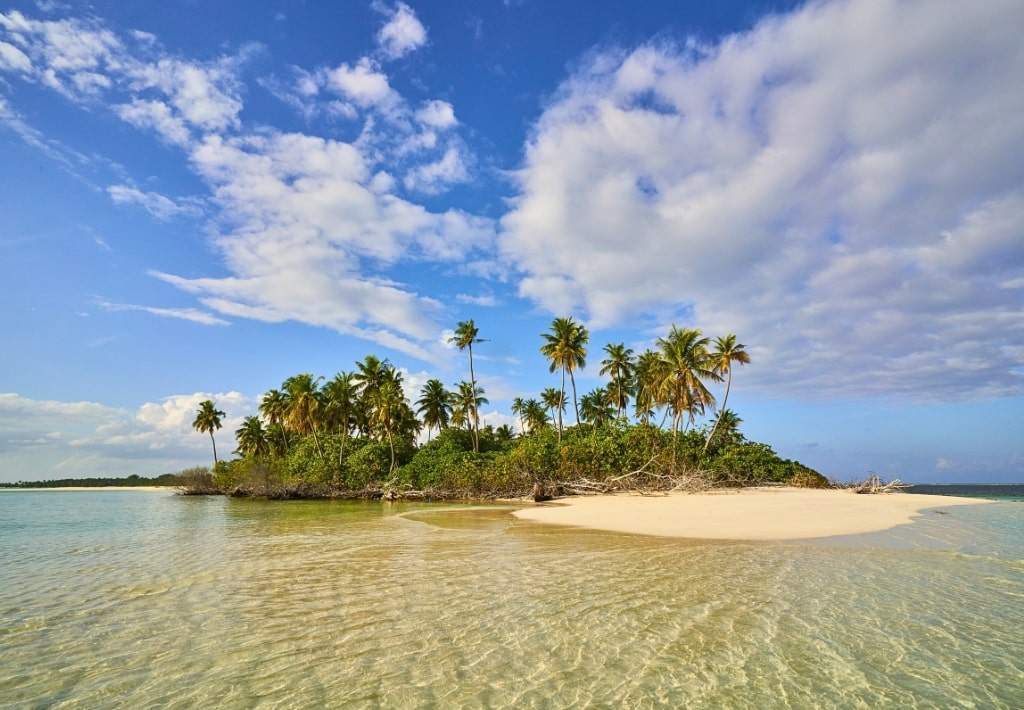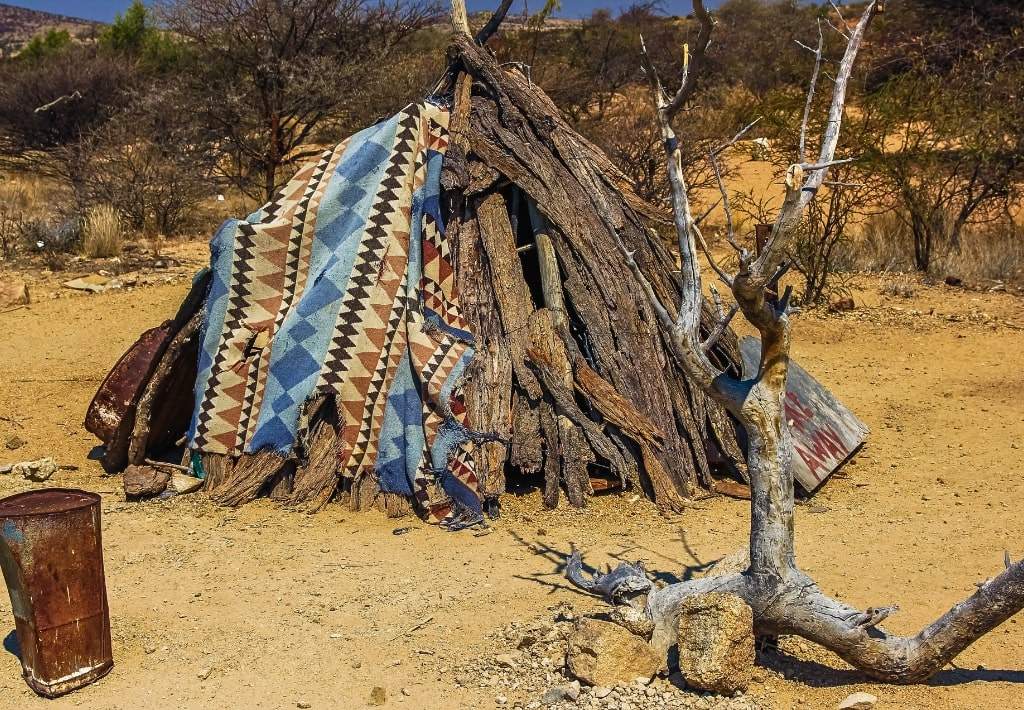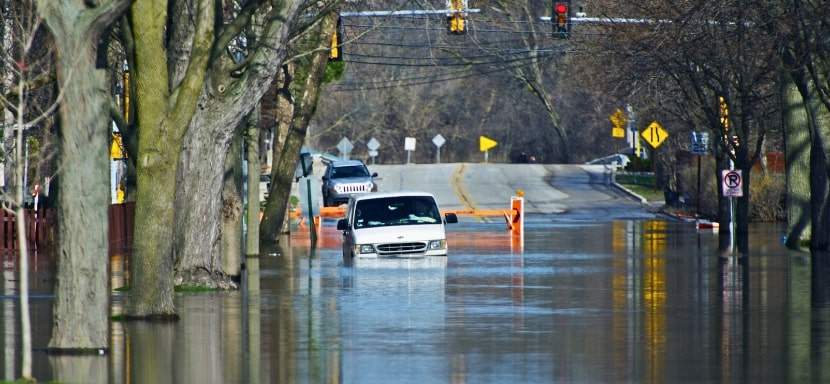How to Survive on a Deserted Island

Deserted Island Survival Guide
It is unlikely you will ever find yourself stranded on a deserted island. But if you do, survival in paradise will be your primary focus.
Whether you find yourself stranded on a deserted island because of a shipwreck or by getting separated from a group, these tips will keep both the experienced outdoorsman and novice enthusiast alive until help can arrive.
Stay Calm
The most important thing to remember is to keep your head. The first couple hours stranded will make your feelings and emotions tailspin.
Take a few minutes to gather your thoughts. Do you have any injuries? Try to figure out where you’re at. Is anyone with you or on the same island you’re on? If so, try and find them. If you have other survivors with you, delegate responsibilities. It’s much easier to survive if you keep your mind busy. Try to keep a positive mental attitude and always keep pushing forward.
Deserted Island Survival Tips and Strategies
Learn vital techniques such as shelter building, water sourcing, fire starting, and signaling for rescue to enhance your chances of survival in remote and challenging environments.
First Things First: Don’t Hurt Yourself
Upon reaching the desert island, your priority should be to ensure your safety and well-being. Begin by conducting a thorough self-examination to assess any bumps, bruises, cuts, or scrapes on your body. Even seemingly minor injuries can worsen in a survival scenario if left untreated. It’s crucial to promptly address any wounds by cleaning them thoroughly, sterilizing them to the best of your ability, and applying appropriate bandages. This proactive approach prevents infections and helps maintain physical health and mobility, which are essential for navigating survival challenges.
In a tropical environment like a desert island, the risk of infection from untreated wounds is exceptionally high due to the proliferation of pathogens in warm and humid conditions. Without proper care, even a tiny cut or scrape can quickly become infected, leading to complications that may jeopardize your ability to survive. By cleaning and bandaging any injuries upon arrival, you mitigate this risk and ensure that you remain in optimal condition to handle the demands of island life.
Remember that your health and well-being are paramount in a survival situation. Neglecting to address injuries promptly compromises your physical resilience and undermines your effectiveness as a resource within the group. By prioritizing self-care and attending to wounds without delay, you position yourself as an asset rather than a liability, contributing to the collective effort to overcome survival challenges on a desert island.
Did You Know?
The average person can survive only three to five days without water. Without food, the average person can go for around three weeks.
Survival Prioritization: Have a Plan
Survival prioritization is essential when faced with the challenges of being stranded on a desert island. By focusing on the most critical tasks and resources, you can increase your chances of rescue and ensure your well-being during this challenging time.
Here are some expert tips and strategies to help you prioritize effectively:
- Assess Your Immediate Needs: Take stock of your situation and identify the most pressing needs, such as shelter, water, food, and medical attention.
- Prioritize Shelter: Establishing a shelter should be one of your top priorities, as it provides protection from the elements and helps regulate body temperature.
- Secure a Water Source: Water is essential for hydration and survival. Locate a freshwater source and prioritize methods for collecting, purifying, and storing water.
- Focus on Fire: Fire serves multiple purposes, including warmth, cooking, signaling, and psychological comfort. Prioritize the creation and maintenance of a fire to address these needs.
- Seek Sustenance: While food is essential for energy and morale, it should be prioritized lower than shelter, water, and fire. Explore the island for edible plants, fruits, and potential sources of small game.
- Signal for Rescue: Maximize your chances of being spotted by search parties by creating visible signals, such as smoke, mirrors, or brightly colored objects, and regularly scan the horizon for passing vessels or aircraft.

Build a Shelter
Adverse weather conditions pose significant challenges on a deserted island. Exposure to the sun, rain, and wind can lead to discomfort and even endanger survival. Staying warm and dry becomes paramount as temperatures drop at night and thunderstorms frequently occur.
Seeking shelter in a cave or constructing a sturdy lean-to offers protection from the elements. Covering the ground beneath you also provides insulation, preventing heat loss and ensuring a more comfortable rest.
Here are some techniques to help you construct a sturdy shelter that will keep you safe and protected from the elements:
- Assess Your Surroundings: Before building, look around and choose a suitable location for your shelter. You’ll want to find a spot that’s flat, dry, and away from hazards like falling branches or high tide.
- Gather Materials: Once you’ve found the perfect spot, it’s time to gather materials for your shelter. Look for sturdy branches, leaves, palm fronds, or any other natural materials you can use to build your shelter. You’ll also need some vines or strong cordage to tie everything together.
- Choose Your Shelter Design: Depending on your environment and available materials, you can build several different types of shelters. A simple lean-to or A-frame shelter is often the easiest to construct and provides good protection from wind and rain.
- Build Your Frame: Start by constructing the frame of your shelter using the branches or saplings you’ve gathered. Lean them against a sturdy tree or tie them together at the top to create a sturdy structure.
- Add Insulation: Once you have your frame in place, it’s time to add insulation to keep you warm and dry. Layer leaves, grass, or other vegetation over the frame to create a thick, insulating layer.
- Waterproof Your Shelter: Cover it with additional leaves or palm fronds to ensure your shelter can withstand rain and wind. You can also use a tarp or plastic sheeting if available.
- Test Your Shelter: Before settling in for the night, test your shelter to ensure it’s sturdy and watertight. Lie down inside and check for any leaks or weak spots needing reinforcement.
Water Sourcing and Purification
Ensuring access to clean, salt-free water is paramount for survival. While the human body can withstand extended periods without food, dehydration can set in rapidly without hydration.
To sustain yourself, it’s essential to promptly locate and secure water sources, such as rivers, springs, dew, or captured rainwater. However, it’s crucial to note that even seemingly clean water sources can harbor harmful parasites and bacteria.
Therefore, always prioritize water purification by boiling any collected water for 10 minutes. This precautionary measure helps eliminate potential pathogens and ensures the water is safe for consumption.
Here are a few valuable tips for water sourcing and purification:
- Locate water sources: Look for natural sources like streams, rivers, or springs. Look for signs of vegetation, as they often indicate nearby water sources.
- Collect rainwater: During storms, use containers or makeshift receptacles. Rainwater is typically safe to drink but should still be purified to remove impurities.
- Construct a solar still: Build a simple solar still using plastic sheeting or a tarp to collect condensation from evaporated water. This method is effective for obtaining fresh water from seawater or damp soil.
- Boil water: Purify water by boiling it over a fire for at least 10 minutes. Boiling kills harmful bacteria and pathogens, making the water safe to drink.
- Use water filtration: Invest in portable water filtration devices or improvise with natural materials like sand and charcoal to filter out contaminants from collected water.
- Chemical purification: Utilize water purification tablets or household bleach to treat water and kill harmful microorganisms chemically. Follow the instructions carefully to ensure proper dosage and effectiveness.
Remember, staying hydrated is crucial for survival, so be proactive in sourcing and purifying water to maintain your health and well-being on a deserted island.
Fire Starting
Establishing a fire is imperative for survival in any wilderness scenario. It provides illumination, warmth, and protection against insects, animals, and potentially hazardous snakes (some of which could be poisonous).
If you possess glasses or binoculars, you can use the lens to focus sunlight onto dry leaves or thin vegetation, igniting an ember to kindle a fire.
Alternatively, without such tools, you can employ traditional friction methods using a board and stick, albeit requiring more time and effort. Persistence is vital in this endeavor.
Mastering the art of firestarting is essential for survival on a deserted island. In addition to providing warmth and cooking capabilities, fire serves as a vital signaling tool for potential rescuers.
Helpful tips and strategies for fire starting:
- Gather tinder, kindling, and fuel: Collect dry leaves, twigs, and small branches for tinder and kindling. Gradually increase the size of fuelwood to sustain the fire once it’s ignited.
- Use a fire starter tool: Equip yourself with reliable fire-starting tools such as waterproof matches, lighters, or ferrocerium rods. These tools make it easier to ignite fires even in challenging conditions.
- Create a fire pit: Clear a small area of debris and dig a shallow pit to contain your fire. This helps prevent the fire from spreading uncontrollably and provides a stable base for building and maintaining the fire.
- Master fire-starting techniques: Learn different techniques, such as the teepee, log cabin, or lean-to method. Experiment with various techniques to find the best solution for your situation and available resources.
- Practice fire maintenance: Regularly add fuelwood to keep the fire burning steadily once lit. Use a stick or tool to stir the embers and encourage airflow, which helps maintain the fire’s intensity and longevity.
- Signal for help: In addition to providing warmth and sustenance, fire can serve as a signal for potential rescuers. Create smoke signals by adding green vegetation or damp materials to the fire, producing thick smoke noticeable against the sky.
How to Start a Fire
This technique is one of the oldest in the books. It involves rubbing a stick back and forth in a hole on a board. The heat from the friction ignites the fuel. The insider tip is to press down hard while spinning the stick as fast as possible.
- Find a Stick: Find a pine or fir (softwood) stick and round one end.
- Board for Fire: Make a small hole in the board about an inch or so from the edge. Cut a V-shaped notch connecting the board’s edge to the hole. With the point of the V against the hole.
- Add the Fuel: Put a dry, light tinder in the V notch.
- Elbow Grease: Place the rounded portion of the stick in the hole and spin the stick back and forth with the palms of your hands. Press down as hard as you can while spinning until the two’s friction creates heat and smoke.
- Add More Fuel: Put a dry, light tinder in the V notch.
- Blow: Once the fuel starts to smoke and the friction has caused an ember. Blow gently on the ember until it creates a small flame. Keep adding fuel until you have a full-blown fire.
Find a Meal: Exploring Food Foraging and Hunting Techniques
When seeking sustenance on a deserted island, exploring the shallow waters and tide pools can yield small fish and mollusks like clams, mussels, and oysters. Additionally, seaweed, if grown and harvested correctly, offers valuable nutrients.

However, exercise caution with seaweed washed ashore. Ensure thorough cooking to eliminate parasites and bacteria. To test for toxicity, rub a small amount on your hand; if there’s no reaction, sample a tiny portion on your tongue before consumption.
Here are some expert tips and strategies to help you forage for edible plants, fruits, and small game:
- Identify Edible Plants: Familiarize yourself with the local flora and learn to recognize edible plants. Look for common indicators such as berries, nuts, and leaves that are safe for consumption.
- Conduct Research: Before embarking on your foraging journey, prioritize learning about indigenous plants and their properties. This knowledge will help you distinguish between edible and poisonous varieties.
- Use Caution: Exercise caution when sampling unfamiliar plants, as some may be toxic. Perform a taste test by rubbing a small portion of the plant on your skin and waiting to see if any adverse reactions occur before ingesting.
- Seek High-Calorie Foods: To sustain your energy levels, gather high-calorie foods such as nuts, seeds, and fruits. Look for sources of protein, carbohydrates, and fats to maintain a balanced diet.
- Utilize Hunting Techniques: If equipped with the necessary tools, such as a makeshift spear or fishing gear, consider hunting for small game or catching fish to supplement your food supply.
- Observe Animal Behavior: Pay attention to animal behavior and tracks to identify potential hunting grounds. Look for signs of activity near water sources or areas abundant in vegetation.
- Practice Patience: Hunting and foraging require patience and persistence. Be prepared to observe your surroundings and await opportunities to catch prey or locate edible plants.
Scavenge Supplies
Explore the beach for items that may have washed ashore during high tide or before rain.
Look out for tools, ropes, or anything suitable for cutting. Essential items like food cans and water bottles serve dual purposes for cooking and hydration. Sheets of plastic can be repurposed for shelter construction or as protective cover from the elements.
Even discarded trash can be valuable; sharp plastic or metal pieces can be fashioned into spears or knives for hunting and fishing. Additionally, they can serve as defensive weapons against wild animals encountered on the island.
Navigation Techniques
Navigating a desert island terrain without modern tools can be challenging, but with the proper techniques, you can effectively orient yourself and find your way around.
Here are some tips and strategies to help you navigate the island:
- Assess Your Surroundings: Take note of prominent landmarks, such as rock formations, trees, or bodies of water, to create mental maps of the island’s terrain.
- Use Natural Cues: Respond to the sun, moon, and stars to determine directions. The sun rises in the east and sets in the west, while the moon generally rises in the east. The North Star can also be a reliable indicator of the north in the night sky.
- Follow Natural Features: Use natural features like rivers, coastlines, and mountain ridges as reference points to guide your movement and maintain a sense of direction.
- Create Markers: Leave behind markers, such as piles of rocks or broken branches, to track your path and avoid getting lost in unfamiliar areas.
- Use Improvised Tools: Craft simple tools like a stick compass or a sundial to help gauge direction and time throughout the day.
- Pay Attention to Wind Patterns: Wind can indicate the presence of nearby land or changing weather conditions. Use wind direction to guide your navigation and anticipate potential hazards.
Signal for Rescue (SOS)
Rescuers will be actively searching for you, so having a well-thought-out plan to signal your location is crucial. Your primary rescue signal should be a fire, which is highly visible from a distance. Enhance the smoke from your fire by adding wet logs or damp moss, but be cautious not to smother it with too much material.
Additionally, utilize open areas on the beach to write out SOS in large, legible letters on the sand. Ensure the letters are high enough to avoid being washed away by high tide. Once written, use rocks to fill in the letters, creating a noticeable contrast that can be easily seen from the sky. Stay vigilant for passing ships on the horizon or the sound of aircraft engines nearby.
Here are some expert tips and strategies to help you effectively signal for rescue:
- Utilize Visual Signals: Use bright-colored clothing, tarps, or reflective materials to create significant, visible signals that can be seen from a distance. Arrange these materials into geometric shapes such as SOS or X to indicate distress.
- Build a Signal Fire: Construct a large fire using dry wood and vegetation to create thick smoke during the day and bright flames at night. Ensure the fire is in an open area and add green vegetation to produce more smoke.
- Create Audible Signals: Use loud noises such as shouting, banging rocks together, or blowing a whistle to attract attention. Repeat patterns of three, such as three short bursts or three whistle blows, to signal distress.
- Utilize Natural Features: Use natural features like cliffs or open spaces to enhance the visibility of your signals. Position yourself in areas with clear lines of sight to passing ships or aircraft.
- Signal During Peak Times: Signal for rescue during peak times when visibility is highest, such as dawn, dusk, or when the sun is directly overhead. This increases the likelihood of your signals being noticed by passing vessels or aircraft.
- Maintain Signal Consistency: Continuously monitor for signs of rescue and maintain consistent signaling efforts until help arrives. Rotate individuals to ensure that signals are maintained throughout the day and night.

First Aid and Injury Management
In a deserted island setting, injuries and illnesses can occur unexpectedly, making it crucial to have basic first aid skills to provide immediate care.
Before administering first aid, assess the situation to ensure your safety and the safety of others. Look for any hazards or dangers that could pose a risk during treatment. Determine the severity of injuries and prioritize treatment based on the urgent medical attention required.
Attend to life-threatening injuries first, such as severe bleeding or difficulty breathing. Use direct pressure and elevation to control bleeding from wounds. Apply a sterile dressing or clean cloth to the wound and maintain pressure until the bleeding stops.
Shock can occur due to severe injury or illness. Keep the individual warm and lying down, elevate their legs if possible, and monitor their vital signs while waiting for help. Immobilize fractures and sprains using splints or improvised materials such as sticks or branches. Avoid pressure on the injured area and support it with padding to prevent further damage. Cool burns with clean water and cover them with a sterile dressing to protect against infection.
Seek medical attention for severe burns or those covering a large body area as soon as possible. Encourage hydration and rest to aid in recovery from illness or injury. Ensure individuals drink plenty of water and avoid exertion until they fully recover.
Keep Your Head: Strategies for Mental Resilience
Maintaining psychological well-being and coping with isolation and stress in challenging situations like being stranded on a deserted island requires mental resilience.
Here are some expert tips and strategies to help you stay mentally strong:
- Establish a Routine: Creating a daily schedule can provide structure and stability, reducing feelings of uncertainty and anxiety. Include activities that promote relaxation and stress relief, such as meditation, exercise, and creative hobbies.
- Stay Connected: Although you may be physically isolated, maintaining connections with loved ones through communication devices or writing letters can provide emotional support and prevent feelings of loneliness.
- Focus on the Present: Instead of dwelling on the uncertainties of the future or past regrets, practice mindfulness and stay grounded in the present moment. Engage in activities that bring you joy and distract you from negative thoughts.
- Cultivate Optimism: Maintain a positive outlook and focus on the aspects of your situation that you can control. Set realistic goals and celebrate small victories to boost morale and motivation.
- Practice Self-Care: Prioritize self-care activities such as adequate sleep, nutrition, and hydration to support physical and mental well-being. Take breaks when needed and allow yourself moments of relaxation and rejuvenation.
- Seek Support: Don’t hesitate to contact others for support and guidance when needed. Lean on fellow survivors or utilize resources such as support groups or mental health professionals to process emotions and cope with stressors.
Resource Conservation: Conserving and Rationing Resources to Prolong Survival on a Deserted Island
Surviving on a deserted island necessitates effective management of resources to prolong survival. To achieve this, it’s crucial to prioritize essential resources such as water, food, shelter materials, and fire-starting supplies.
Developing rationing protocols based on necessity and availability can help ensure resources last until rescue or additional supplies are secured. Minimizing waste by using items sparingly and repurposing materials whenever possible is essential to conserve resources.
Implementing sustainable practices like rainwater collection and eco-friendly shelter construction can further minimize resource depletion and environmental impact. Additionally, fostering a sense of community and sharing resources collaboratively among survivors can help maximize collective survival chances.
Regular monitoring of resource levels and consumption rates allows for adjustments to rationing strategies, ensuring long-term sustainability. By adhering to these resource conservation practices, individuals can optimize their chances of survival until rescue or assistance arrives.
Ten Incredible Island Survival Stories
These ten historical events showcase the human capacity to overcome adversity and find solutions in the most isolated environments.
From unexpected circumstances to extraordinary feats of ingenuity, these tales offer insights into the human spirit and the will to endure.
- Alexander Selkirk: Rescued from Juan Fernández Island after four years.
- Jose Salvador Alvarenga: Rescued after 438 days adrift in the Pacific Ocean.
- The crew of the USS Indianapolis: Rescued after days stranded in the Pacific Ocean.
- Mauro Morandi: Rescued from the island of Budelli after living there alone for years.
- The Crew of the Providencia: Rescued from an uninhabited island in the Caribbean after a shipwreck.
- Robertson Family: Rescued from a deserted island in the Pacific Ocean after 38 days.
- Terry Jo Duperrault: Rescued after surviving for four days alone on a life raft in the Atlantic Ocean.
- Thomas Mitchell: Rescued from a remote island off the coast of Australia after being stranded for two days.
- Steve Callahan: Rescued after spending 76 days adrift in a life raft in the Atlantic Ocean.
- Lucy Irvine and Gerald Kingsland: Rescued from the remote island of Tuin after a year-long experiment in solitude.
More Air, Land, and Sea Scenarios
How to Survive a Flash Flood While Driving
Surviving a flash flood while driving requires quick thinking, calmness, and a plan. This guide walks…
How to Survive a Hot Air Balloon Crash
Hot air balloon rides can be magical, with breathtaking views and a serene, floating sensation. But as…
How to Survive a Motorcycle Accident
Life on two wheels is exhilarating, but let’s not sugarcoat it—motorcycle wrecks are a real risk. Whether…
How to Survive a Helicopter Crash
If you ever find yourself in a helicopter plummeting toward the ground, the odds can feel stacked…
How to Survive Being Stuck in an Airport
Travelers love airports, right? You walk in with dreams of quick security checks, ample seating, and maybe…
Recent Survival Posts
How to Survive a Layoff
Layoffs feel personal—even when they’re not. One day, you’re responding to Slack messages and forwarding…
How to Survive a Drug Test
I never imagined I’d be so emotionally invested in a paper cup. But there I was, standing under the fluorescent…
How to Survive an Interrogation
If you’ve ever been caught in the crosshairs of an overly enthusiastic mall cop or stared down by someone…
How to Survive a Nightclub Shooting
Nightclubs pulse with life—lights flashing, music pounding, bodies packed tight on the dance floor. It’s a place to…
How to Survive a Bachelor Party
A bachelor party is a delicate mix of celebration, chaos, and questionable decision-making, wrapped…
More Air, Land, & Sea Survival Scenarios

How to Survive a Hot Air Balloon Crash
Hot air balloon rides can be magical, with breathtaking views and a serene, floating sensation. But as with any adventure, things can go awry. A hot air balloon crash is not a common air survival scenario, yet understanding how to respond effectively can make all the...

How to Survive a Motorcycle Accident
Life on two wheels is exhilarating, but let’s not sugarcoat it—motorcycle wrecks are a real risk. Whether you’re a seasoned rider or just learning, knowing how to survive a motorcycle wreck is crucial. By preparing beforehand, reacting wisely during the incident, and...

How to Survive a Helicopter Crash
If you ever find yourself in a helicopter plummeting toward the ground, the odds can feel stacked against you. You picture fiery explosions, wild spinning blades, and—worst of all—your life flashing before your eyes. But here’s the thing: helicopter crashes are...

How to Survive Being Stuck in an Airport
Travelers love airports, right? You walk in with dreams of quick security checks, ample seating, and maybe a lounge with bottomless snacks. But what if your dream turns into a drawn-out nightmare, and you're stuck there for hours? Or worse, overnight. We've all been...

How to Survive Jet Lag
We’ve all been there: you board a plane full of excitement, jet off to a far-flung destination, and when you arrive, you feel like you’ve been hit by a bus. This, my friends, is jet lag. A cruel reminder that while airplanes can soar at 600 mph, our bodies are...
More Survival Scenarios

How to Survive a Layoff
When the Floor Falls Out: The Reality of a Layoff Layoffs feel personal—even when they're not. One day, you're responding to Slack messages and forwarding emails. Next, you're staring at your monitor as it logs you out... for good. Whether it's a restructuring, a...

How to Survive a Drug Test
The Cup, The Room, The Truth I never imagined I’d be so emotionally invested in a paper cup. But there I was, standing under the fluorescent hum of a strip-mall clinic, trying to recall the last time I ate a poppy seed bagel. That’s the thing about drug tests—they...

How to Survive an Interrogation
If you've ever been caught in the crosshairs of an overly enthusiastic mall cop or stared down by someone in a uniform with a clipboard and a glare, you’ve felt it — the chilly fingers of interrogation anxiety. And while most of us imagine interrogation scenes as...

How to Survive a Nightclub Shooting
Nightclubs pulse with life—lights flashing, music pounding, bodies packed tight on the dance floor. It’s a place to escape, feel the rhythm, and lose yourself in the crowd. But that same energy can turn deadly in seconds, transforming a night of fun into one of the...

How to Survive a Bachelor Party
A bachelor party is a delicate mix of celebration, chaos, and questionable decision-making, wrapped in the noble intention of sending the groom off into married life with a night he’ll (hopefully) remember. It’s a ritual as old as time—well, as old as men deciding...

How to Survive Your First Time at the Gym
Walking into a gym for the first time can feel like stepping into an alien world. The machines hum with purpose, the regulars move confidently, and you’re left standing there, clutching your water bottle, wondering whether you’re in the right place—or on the right...

How to Survive a Worldwide Communications Breakdown
Imagine waking up to silence. Your phone doesn’t buzz, your email won’t load, and even your local radio station crackles with static. A worldwide communications breakdown has hit. What next? For many, this doomsday scenario may sound like the opening lines of a...

How to Survive a Flash Flood While Driving
Surviving a flash flood while driving requires quick thinking, calmness, and a solid plan to ensure your safety. Preparation can make all the difference between a close call and a catastrophe in emergencies like this. This guide provides practical advice to protect...

How to Build an Emergency Kit
Emergencies don’t knock politely at the door. They barge in, uninvited, like a distant relative with a penchant for drama, turning your world upside down without warning. Whether it’s a power outage, a natural disaster, or an unexpected evacuation, the key to staying...

How to Protect Yourself From Insects in the Wild
There’s nothing like being out in the wild—birdsong echoing through the trees, the fresh scent of earth, and a deep sense of peace that makes you think, “Ah, this is what life is about.” But then comes the buzzing. Mosquitoes, ticks, and flies swoop in like uninvited...
